Vietnam province ignores public outcry to enact pig slaughter ritual (pics)
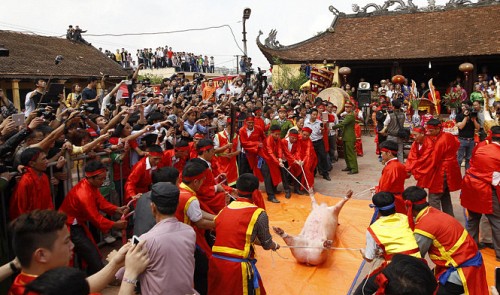
The Nem Thuong Pig Slaughter rituals were done this morning, or the sixth day of the Lunar New Year, right at the center of a temple.
The rite is held annually on the sixth day of the first month of the lunar year, as per tradition, by natives of Nem Thuong Village, Khac Niem Commune, Tien Du District in the northern province of Bac Ninh.
It usually attracts thousands of mercilessly delighted locals and visitors, including children.
Pigs are slashed and slaughtered in front of the cheering spectators as a sacrifice to God after they are carried around the village.
At 8:30 am on Tuesday, a procession was performed, with two pigs, each weighing some 170 kilograms, being carried around the village.
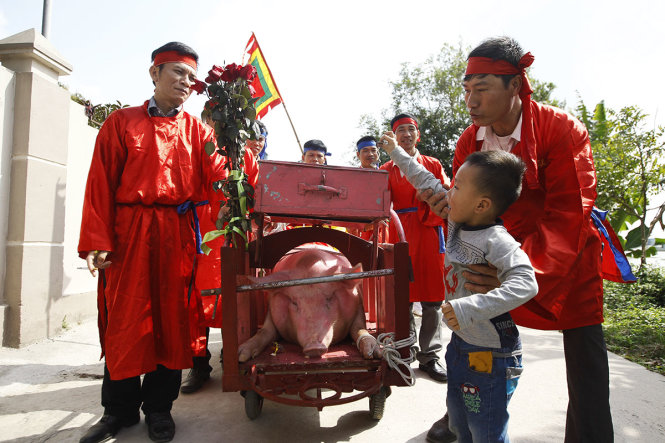
A young child tries to put some money into a box over the vehicle during the pig procession on February 24, 2015. Photo: Tuoi Tre
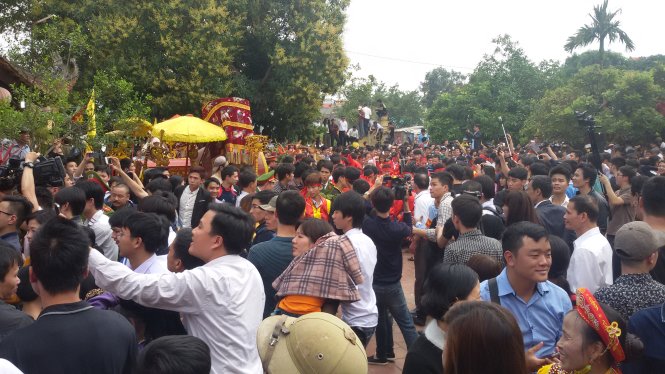
Locals and visitors are seen vying for a better view of the pig procession on February 24, 2015. Photo: Tuoi Tre
Leading the procession were young children with national flags in their hands, followed by those who carried a photo of late President Ho Chi Minh and a group of village elders.
The Pig Slaughter rite officially began at 12:00 pm sharp and was preceded by a traditional flag dance.
Both the flag dancer and pig butcher are 57 years old, as the age is associated with “Phuc,” a Vietnamese word meaning prosperity and blessings.
Following a traditional speech to pray for a new year loaded with good luck and blessings which was delivered by a village elder, two butchers stood at the center of the temple yard with two razor-sharp machetes.
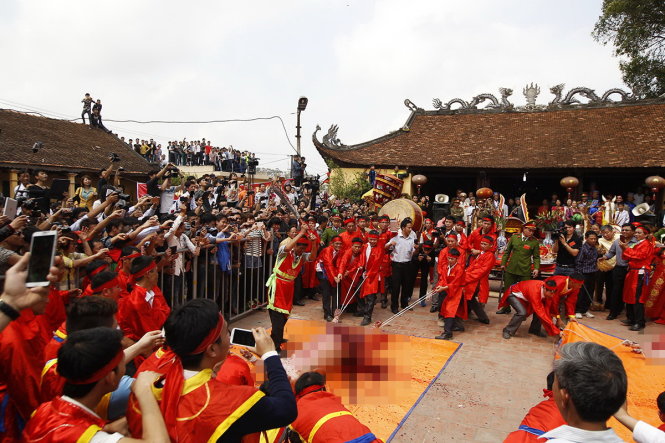
A pig is shown being slashed several times and writhing in its own pool of blood on February 24, 2015. This mage has been censored as it may be distubring to some readers. Photo: Tuoi Tre
To the drum beats, the duo began slashing the two defenseless pigs, which soon writhed in pain and their own pools of blood.
The temple yard was packed with locals and visitors, who took photos of and filmed the brutal process.
According to butcher Tran Van Tinh, those taking charge of the hacking job are supposed to make the first cut between the pig’s two front legs.
They then make three consecutive slashes in the immediate area behind the pigs’ two forelegs.
After the slashing was complete, the two dead pigs were butchered in an area right behind the temple.
According to village elders, the pigs’ heads were cut off and made into salted, preserved meat.
Despite the organizer’s and elders’ warnings, many people still daubed sheets of money with the pig’s blood in the hope of getting luck in the new year.
The sight before, during and after the pig slaughter was extremely chaotic.
On January 27, Animals Asia, a Hong Kong-based animal protection organization, released a message to call for an end to the Nem Thuong Pig Slaughter festival for a number of reasons.
According to the organization, the festival is offensive and could have a negative effect on witnesses as well as the Southeast Asian country’s tourism image.
Hacking apart healthy, live pigs is a cruel act to animals which could freeze the feelings of witnesses, especially children who have an incomplete and vulnerable psychology, the organization underscored.
Animals Asia also cited research as indicating that witnesses of cruel treatment toward animals tend to cruelly treat other people in the community.
The NGO also underlined that the festival causes unnecessary suffering for animals as they can also feel pain.
Moreover, Animals Asia said traditional culture changes over time, so unsound customs should be changed, and any festival needs to spread humanity to the next generation.
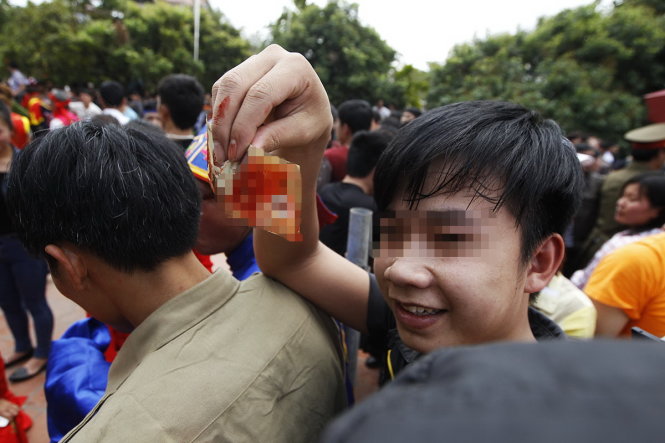
A young man is excited that he dipped a banknote into the pool of the slaughtered pigs in hopes of good luck in the new lunar year. This mage has been censored as it may be distubring to some readers. Photo: Tuoi Tre
Bac Ninh Province’s Department of Culture, Sports, and Tourism in February proposed changing the name and limiting the number of people witnessing the slaughtering segment of the festival.
Its proposal, which has been sent to the provincial People’s Committee, suggests pooling public opinion on changing the name of the festival to “Pig Offering” from “Pig Slaughter,” as well as limiting the public part of the fest to the time when the pig is carried around the village in front of the crowd.
The slaughtering part will be done at a quieter place with caps put on the number of spectators, instead of in front of thousands of people like the present, according to the proposal.
People will not be allowed to daub sheets of money with the pig’s blood either, the plan said.
The province’s leaders then promised to assign people to guard the slaughter in order to make sure only a limited number of people could witness the bloody scene.
After Animals Asia’s appeal, the Vietnamese Ministry of Culture, Sports, and Tourism said it does not approve of festivals that include brutal and barbarous rites.
However, Prof. Ngo Duc Thinh, former dean of the Vietnam Institute of Cultural Studies, said the best method is not to use administrative measures to interfere in cultural, religious, and spiritual festivals across the country, as every cultural and religious activity in folk festivals of Vietnamese people has its root and reason.
Culture researchers suggest that locals will automatically end the rites which no longer prove inappropriate in modern life.
What the stars mean:
★ Poor ★ ★ Promising ★★★ Good ★★★★ Very good ★★★★★ Exceptional
Latest News
More News
- Traditional Vietnamese crafts go digital to boost global reach (July 17, 2024 | 18:11)
- Standard Chartered Hanoi Heritage Race holds meet & greet (June 29, 2024 | 09:00)
- IFF Holdings, Marriott International open luxury hotel, residences (June 24, 2024 | 15:54)
- New Zealand Trade and Enterprise partners with major retailers to bring premium products to Vietnam (May 24, 2024 | 11:43)
- Vietnam’s tourism brand in need of methodical marketing strategies (May 17, 2024 | 07:52)
- Muong Thanh Group sets record for largest simultaneous Thai Xoe dance performances (May 08, 2024 | 11:42)
- Trang An marks 10th anniversary as UNESCO World Heritage Site (April 30, 2024 | 09:00)
- Visiting Trang An Heritage Region 2024 to join Trang An Festival (April 29, 2024 | 08:57)
- Le Méridien Saigon launches new series of Chefs' Table (April 15, 2024 | 15:35)
- Promoting Vietnam's tourism in Hollywood (April 13, 2024 | 08:00)







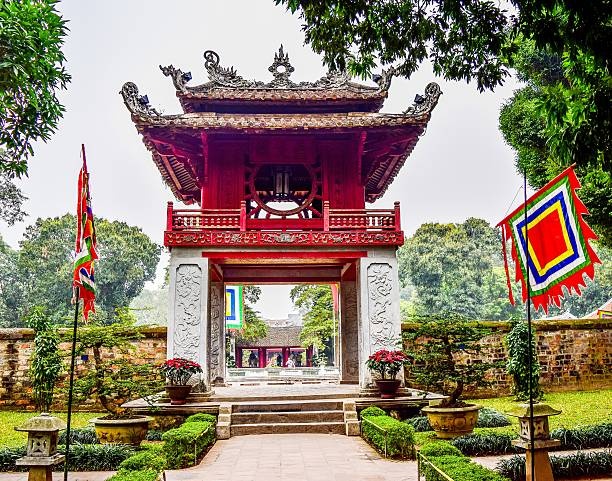

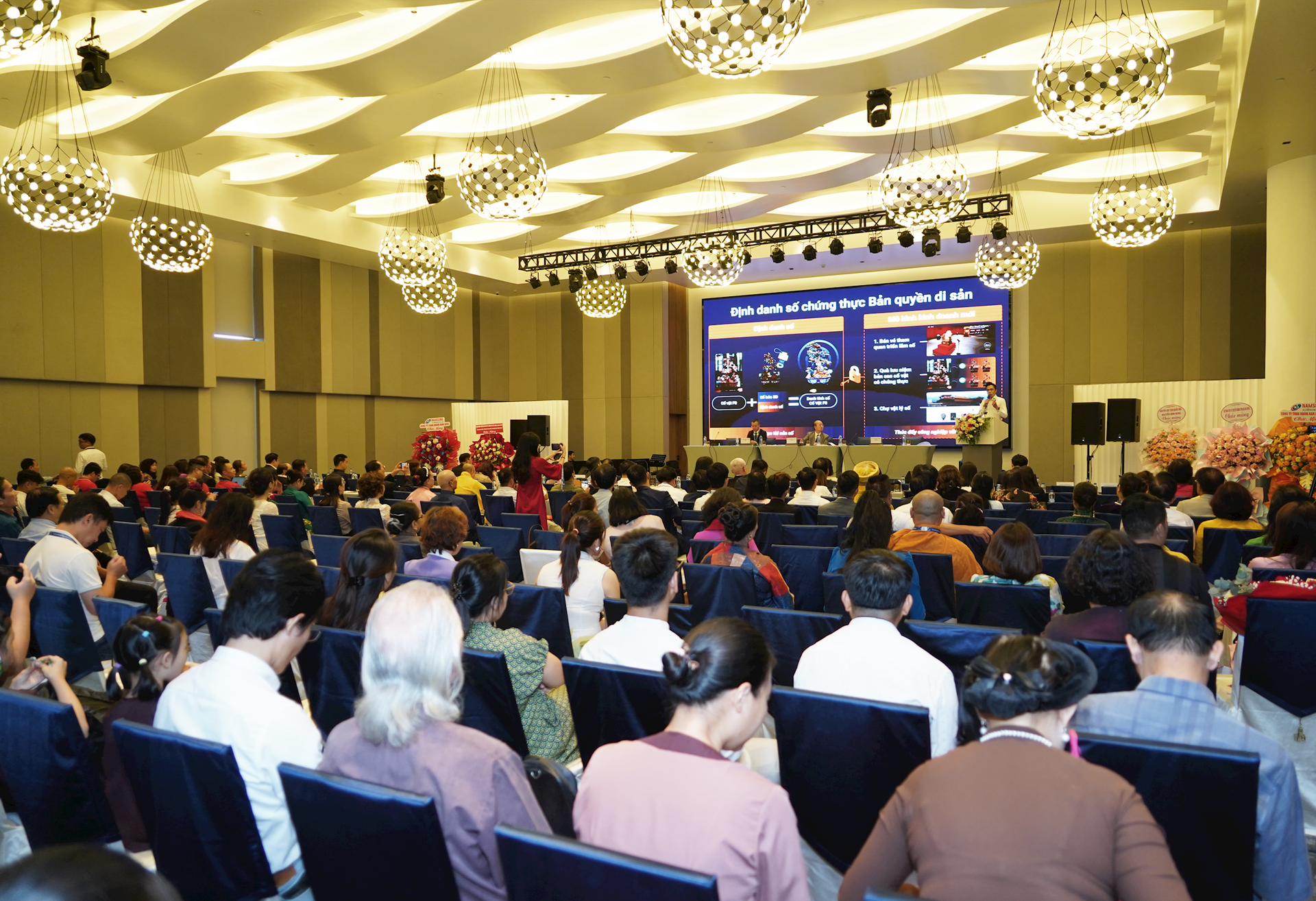







 Mobile Version
Mobile Version